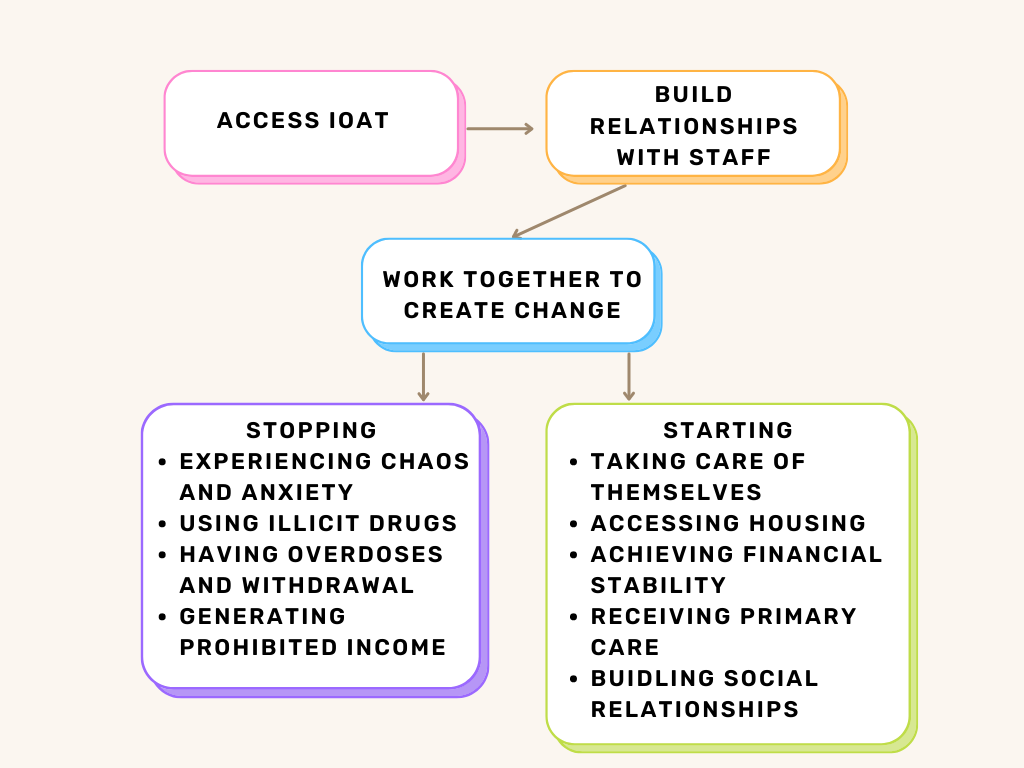Our team evaluated the injectable opioid agonist treatment (iOAT) programs in Alberta. These programs are like the intensive care unit of addictions management. Clients are offered an agonist (alternative) by prescription, instead of an unregulated substance. The program is similar to methadone, except the medicine is injected rather than swallowed.
We conducted two studies: one looking at the experiences of clients, and one looking at the experiences of iOAT staff.
iOAT clients: We found that iOAT clients had significant benefit from participating in the program. They indicated that the came to the program for the medication, but they stayed because of the strong relationships with staff members. It was these relationships that helped the clients work toward their goals. We identified two patterns for clients: starting and stopping.

Starting meant that clients started taking care of themselves, going to appointments, securing housing, finding work, and reconnecting with family. Stopping meant that clients stopped using unregulated substances, being arrested, and participating in prohibited income generation. Clients described the program as transformational and life saving. It was incredible to see the clients’ progress through their interviews. The program demonstrated a high degree of value for the clients and we recommend that it is expanded.
iOAT staff: We found that the staff who worked in the iOAT program described their work as rewarding and valuable. One of the challenges was that the clients had significant needs, and the nurses reported that the number of services that they provided grew (such as primary care, counselling, sexual health care, chronic illness management, and more). The level of staffing and support didn’t increase, so staff were providing this expanded care at their own detriment – by missing breaks or staying late. These factors meant that staff were at risk for burnout, which could lead to staff turnover in the clinic. We recommend that nurse managers work with staff to identify the scope of practice within a clinic, and build relationships with other nearby facilities that may be able to complement their scope of practice. This way, clients will access all the services they need, but not at the expense of the clinic staff. Also, if iOAT programs were to close, there are potentially other relationships in place and clients won’t lose all their healthcare services. The publication is coming, and I’ll post the links here as soon as it is available.
